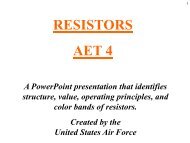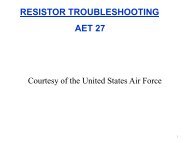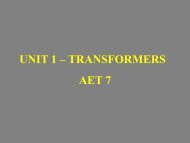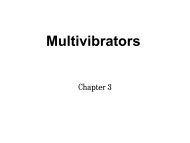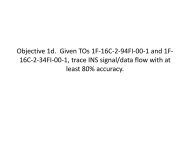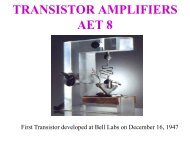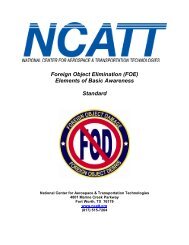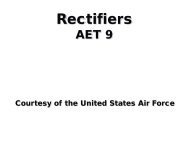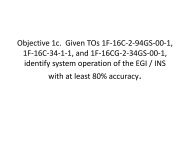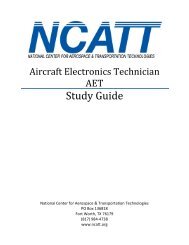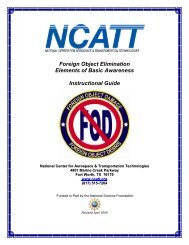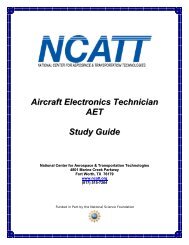(AET) Study Guide - NCATT
(AET) Study Guide - NCATT
(AET) Study Guide - NCATT
- No tags were found...
Create successful ePaper yourself
Turn your PDF publications into a flip-book with our unique Google optimized e-Paper software.
Page 13 of 515. Inductors <strong>NCATT</strong> Training Standard Level (B)(b) Isolate Faulty InductorsObjective:Identify the relationship of basic facts and state general principles for isolating faulty inductors.Content – Isolate Faulty Inductors:Explain the procedures (visual and non-visual) for troubleshooting inductors, also called a coil orchoke, with reference to the following terms:• Open Inductor—Fault caused by an open circuit (no continuity) between the two leads.There will be no current.• Shorted Inductors—Fault that allows the current to travel from one lead to the other leadwithout going through the coil (winding) of the inductor.• Improperly Installed Inductors—Fault caused by inductors that are not installed correctlyor installed non-compliant to industry standards.6. Capacitors <strong>NCATT</strong> Training Standard Level (B)(a) Theory of OperationObjective:Identify the relationship of basic facts and state general operating principles about capacitortheory of operation.Content – Theory of Operation:Explain the use and operation of capacitors with reference to the following terms:• Time constant—Amount of time, measured in seconds, needed for the voltage across acapacitor to advance to 63.2% of the voltage applied to the circuit.• Fixed Capacitors—Constructed of plates and dielectrics placed firmly together andcovered with a protective material such as waxed paper, plastic, ceramic material, orinsulated casing.• Variable Capacitors—Changes capacitance in a circuit by changing the area of its plates.The dielectric in a variable capacitor is normally air. Variable capacitors are used inradios and other electronic devices when it is necessary to change the capacitance to meetcircuit requirements.• Electrolytic Capacitors—Uses a liquid or paste dielectric that has a considerably higherdielectric strength as compared to air or other dry materials used as the dielectric in othercapacitors. Electrolytic capacitors, used only in DC applications, are polarity sensitiveand connecting them incorrectly in a circuit will destroy them.• Dielectric—Insulating material that stores electrical energy in an electrostatic field.• Farad—See Basic Terms/Direct Current (DC).• Correct Operation of Capacitors—Stores electrical energy in an electrostatic field. Theability of a capacitor to store a charge is called capacitance. Capacitance offers resistanceto the flow of current by continuously charging and discharging.Copyright © 2008 by the National Center for Aircraft Technician Training. All rights reserved.Individuals may download, print, and make copies of this documentfor their own personal use. Commercial use prohibited.



